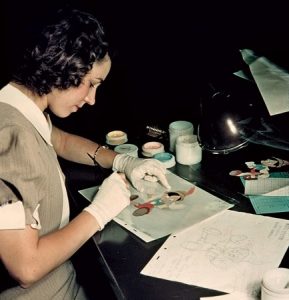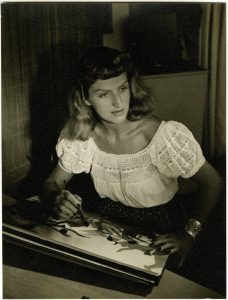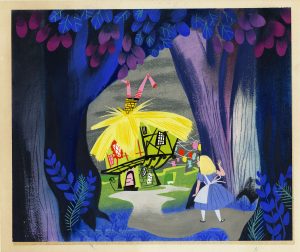By Samantha Anthony

The arrival of fall is near, and for me that means finding fun things to do inside when the weather is rainy, snowy, or just too cold for my liking. One of the most popular fall pastimes is watching movies cuddled under a blanket – I’m a child at heart, so Disney’s animated films are a common selection for me on movie nights. Although I’ve been a fan of movies like Sleeping Beauty, The Nightmare Before Christmas, The Lion King, and many more, it wasn’t until just recently that I learned about the multitude of women that pioneered the Ink and Paint department at Walt Disney’s studio in Burbank, California during the company’s earliest years, which would later be referred to as “The Golden Age” of Disney film creation.
Although they suffered from lack of recognition and lower wages during their time at the production company, the women who worked for Disney have received more attention in recent years.

In a Vanity Fair article by Patricia Zohn, she chronicles the lives of the young women who worked in the Ink and Paint department at Walt Disney Animation Studios from 1930 through the end of World War II. “‘I’ll be so thankful when Snow White is released and I can live like a human once again,’” Zohn quotes from a letter penned by a woman who worked 85 hours a week toward the end of production on the film, which was anticipated to be a huge success. Zohn writes, “During Snow White, it was not at all unusual to see the ‘girls’ – as Walt paternalistically referred to them – thin and exhausted, collapsed on the lawn, in the ladies’ lounge, or even under their desks.’” The all-women Ink and Paint department was responsible for the coloration and line work in Snow White, Pinocchio, Dumbo, Bambi, and more animated films. In the weeks leading up to the release of Snow White, some women did not receive their paychecks (“Walt joked that he had to mortgage Minnie and Mickey,” Zohn writes), and still they toiled away meticulously at their work, painting characters and scenes precisely as directed. Snow White would go on to become the highest-grossing American film at the time after its premiere, to which none of the women were invited. Still, the girls were honored to work for Disney, sometimes after attending months of unpaid training with no promise of an offer at the end.
Disney’s Golden Age ended, but women were still a vital part of the creativity and talent required to produce the company’s whimsical films. In the mid-20th century, artist Mary Blair became one of Walt Disney’s most respected illustrators. Blair created concept art for a number of films, including Cinderella, Alice in Wonderland, and Peter Pan. Katherine Brooks writes in a Huffington Post article that Blair’s “…bright designs and modernist style reigned supreme at Walt Disney’s studio for nearly 30 years, during which she created iconic illustrations and drawings.” Today, Blair is commonly credited for her work with colors and character development in a number of Disney films, some of which she worked on as art supervisor, an esteemed position for which Walt Disney appointed her himself.

Today, Disney recognizes its female contributors with pride. Moana, which was released by Walt Disney Animation Studios in 2016, was the first Disney animated feature film to have a woman serve as the head of animation, according to an article by Julie Hinds for the Detroit Free Press. Watching a Disney film is a special, almost therapeutic occasion, but knowing about the women who worked on these movies somehow makes it even better. Don’t you agree?